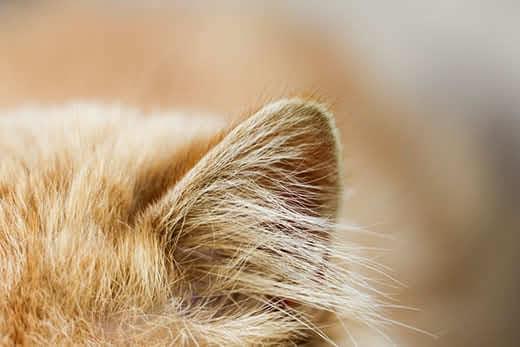
-
Find the right food for your petTake this quiz to see which food may be the best for your furry friend.Find the right food for your petTake this quiz to see which food may be the best for your furry friend.Featured products
 Small & Mini Mature Adult 7+ Dog Food
Small & Mini Mature Adult 7+ Dog FoodHill's Science Plan Small & Mini Breed Mature Adult Dog Food with Chicken is a complete pet food, specially formulated with ActivBiome+ Multi-Benefit Technology.
Tailored nutrition to support graceful ageing in small dogs. Specially made with a synergistic blend of nutrients for energy & vigor.Shop Now Perfect Digestion Small & Mini Adult Dog Food
Perfect Digestion Small & Mini Adult Dog FoodHill's Science Plan Perfect Digestion Small & Mini Breed Adult Dog Food with Chicken & Brown Rice supports ultimate digestive well-being & a healthy microbiome.
Shop Now Perfect Digestion Large Breed Puppy Food
Perfect Digestion Large Breed Puppy FoodPrecisely balanced nutrition with Hill's ActivBiome+ prebiotic blend actively contributes to supporting digestive health and overall well-being to help your pet feel their best
Shop NowFeatured products Hairball & Perfect Coat Adult Cat Food
Hairball & Perfect Coat Adult Cat FoodHill's Science Plan HAIRBALL & PERFECT COAT Adult cat food with Chicken is specially formulated to effectively help avoid hairball formation in adult cats while promoting a beautiful coat. Thanks to its mix of essential Omega-6 fatty acids, this food benefits the cat's skin and fur keeping them healthy and shiny. Our Advanced Fibre Technology helps reduce hairballs by naturally promoting their passage through the gut. This food is formulated with high-quality protein for a perfectly balanced, great-tasting recipe.
Shop Now Hypoallergenic Dry Cat Food
Hypoallergenic Dry Cat FoodHILL'S SCIENCE PLAN Hypoallergenic Adult cat food with egg & insect protein is a complete pet food for adult cat 1–6 years old. It's formulated for cats with delicate skin and stomach, with limited high quality novel protein sources & no grain.
Shop Now Kitten Food
Kitten FoodTender chicken chunks in gravy for kittens, with omega-3s for healthy eye & brain development and high-quality protein to support muscle growth. With balanced minerals to promote strong bones & teeth.
Shop Now -
Dog
- Dog Tips & Articles
-
Health Category
- Weight
- Food & Environmental Sensitivities
- Urinary
- Digestive
- Joint
- Kidney
-
Life Stage
- Puppy Nutrition
- Adult Nutrition
- Senior Nutrition
Cat- Cat Tips & Articles
-
Health Category
- Weight
- Skin & Food Sensitivities
- Urinary
- Digestive
- Kidney
-
Life Stage
- Kitten Nutrition
- Adult Nutrition
Featured articles The Right Diet For Your Pet
The Right Diet For Your PetLearn what to look for in healthy pet food & nutrition, including ingredients, quality of the manufacturer, your pet's age, and any special needs they have
Read More Understanding Your Pet's Microbiome
Understanding Your Pet's MicrobiomeLearn what a pet's microbiome is, how it contributes to your pet's gut & overall health, and why nutrition is important in maintaining healthy microbiomes.
Read More Pet Food Storage Tips
Pet Food Storage TipsWhere you store your cat and dog food can make a big difference in the quality and freshness once it is opened. Here are some common questions and recommendations for optimal storage for all of Hill’s dry and canned cat and dog food.
Read More -


Is your cat shaking their head? Is there debris in their ear? Is one or both of their ears red and smelly? Your cat might have an ear infection. Here's everything you need to know about the condition.
Cat Ear Infections: Where Do They Happen?
While humans usually develop infections in the middle or inner ear, outer ear infections are more common in cats. This type of infection affects the pinna — the external part of the ear — and the part of the ear canal outside of the eardrum. In some cases, outer ear infections can cause a perforation of the eardrum and lead to problems in the inner and middle parts of the ear.
Veterinarians classify a cat ear infection by the type of infection that causes it. Cat ears can be infested with yeast, bacteria, ear mites or a combination of all three.
Cat Ear Infection Causes
Ear mites are common mites that live on the surface of pets' ears, including those of cats, dogs and ferrets, says the Companion Animal Parasite Council. Ear mites are very contagious and spread through direct contact. Fortunately, people can't contract ear mites. Because ear mites are so contagious, they're a bigger problem when multiple cats live together in tight quarters, like in a shelter.
While ear mites are generally the main culprit of a kitten ear infection, yeast and bacterial infections are usually seen in older cats. Yeast and bacterial infections in kittens tend to only be secondary to an ear mite infestation.
Ear infections due to yeast or bacteria can develop secondary to an ear mite infestation, or can develop due to allergies. It's normal for small amounts of yeast and bacteria to live in the ear canal, but if something puts the ear out of balance, like ear mites, polyps or allergies, then a secondary bacterial or fungal infection can occur.

Signs of a Cat Ear Infection
Cats normally keep their ears very clean. A normal, healthy cat ear is pink or pigmented, has very little debris and doesn't have an odor. An infected ear looks very different. If your cat is suffering from an ear infection, you may notice any or all of the following:
- Excessive scratching at the ears or shaking of the head
- Lowered ears when they're usually upright
- Ear redness or scratches on the ear
- Ear discharge that's black, dark brown, white, yellow or green
- Odor from the ear
- Head shyness or irritability when you go to pet the ears
Diagnosing a Cat Ear Infection
Your vet will use a combination of physical exam findings and lab exams to determine whether your cat has an ear infection. They'll likely look inside your cat's ear with an otoscope and use a cotton swab to take a sample from your cat's ear. They'll then recommend treatment based on what they find.


Tasty Tips
Ear Infection Treatments
Treatment of an ear infection depends on the specific type of infection your cat has. Unless the eardrum is perforated, a thorough cleaning is usually recommended. This serves to remove debris, which can impede a medicine's efficacy, and removes live ear mites and mite eggs. If your cat isn't cooperative, your vet may recommend sedating your cat, so they can get the ear canal squeaky clean. You may be sent home with a cleaner to clean your cat's ears at home. If you are, be sure to ask the veterinary staff to demonstrate how to clean your pet's ears yourself.
If your cat has ear mites, your vet may be able to put a single dose of medicine in your cat's ears that will clear up the infestation. If your cat has a yeast or bacterial infection, your vet will either prescribe a single dose of medicine or will send you home with medicine. Always give your cat all medication as prescribed. Don't stop treating their ear when it starts to clear up. If you don't finish the medicine completely, the infection could return. Your veterinarian will likely request a follow-up visit to ensure the infection has completely cleared up.
A cat ear infection should be treated as a serious medical condition. Never leave one untreated. If left untreated, it can lead to permanent hearing loss and balance problems. Untreated ear mites spread fast and can infect many other animals. Furthermore, ear infections are painful and can make your cat miserable.
How to Prevent a Cat Ear Infection
To help prevent your cat from getting an ear infection, keep them away from stray cats, who are more likely to have ear mites. If your cat has any underlying food or environmental allergies, work with your veterinarian to address and treat those early to prevent yeast or bacterial infections.


Dr. Sarah Wooten graduated from UC Davis School of Veterinary Medicine in 2002. A member of the American Society of Veterinary Journalists, Dr. Wooten divides her professional time between small animal practice in Greeley, Colorado, public speaking on associate issues, leadership, and client communication, and writing. She enjoys camping with her family, skiing, SCUBA, and participating in triathlons.
Related products

Tender chicken chunks in gravy for kittens, with omega-3s for healthy eye & brain development and high-quality protein to support muscle growth. With balanced minerals to promote strong bones & teeth.

HILL'S SCIENCE PLAN Hypoallergenic Adult cat food with egg & insect protein is a complete pet food for adult cat 1–6 years old. It's formulated for cats with delicate skin and stomach, with limited high quality novel protein sources & no grain.

Hill's Science Plan HAIRBALL & PERFECT COAT Adult cat food with Chicken is specially formulated to effectively help avoid hairball formation in adult cats while promoting a beautiful coat. Thanks to its mix of essential Omega-6 fatty acids, this food benefits the cat's skin and fur keeping them healthy and shiny. Our Advanced Fibre Technology helps reduce hairballs by naturally promoting their passage through the gut. This food is formulated with high-quality protein for a perfectly balanced, great-tasting recipe.

Hill's Science Plan Adult Cat Food with Chicken is a complete pet food, specially formulated with ActivBiome+ Multi-Benefit Technology.
This food is specially formulated to fuel the energy needs of cats during the prime of their life.
Related articles

Find out about how you can support your cat's digestion to boost overall health. Diet is key to a long and happy life for your cat, so discover what you can do.

When learning how to train your cat, you'll start with very basic first steps that both reward good behavior and discourage the bad.

Discover what you can do to spot and support a sensitive cat stomach. See what routines and food you can implement to help your cat be happy and healthy.

Discover which cat toys games your feline friend might like, and how they are great sources of exercise. Explore our library of articles to learn more.

Put your cat on a diet without them knowing
Our low calorie formula helps you control your cat's weight. It's packed with high-quality protein for building lean muscles, and made with purposeful ingredients for a flavorful, nutritious meal. Clinically proven antioxidants, Vitamin C+E, help promote a healthy immune system.
Put your cat on a diet without them knowing
Our low calorie formula helps you control your cat's weight. It's packed with high-quality protein for building lean muscles, and made with purposeful ingredients for a flavorful, nutritious meal. Clinically proven antioxidants, Vitamin C+E, help promote a healthy immune system.

